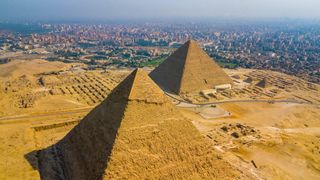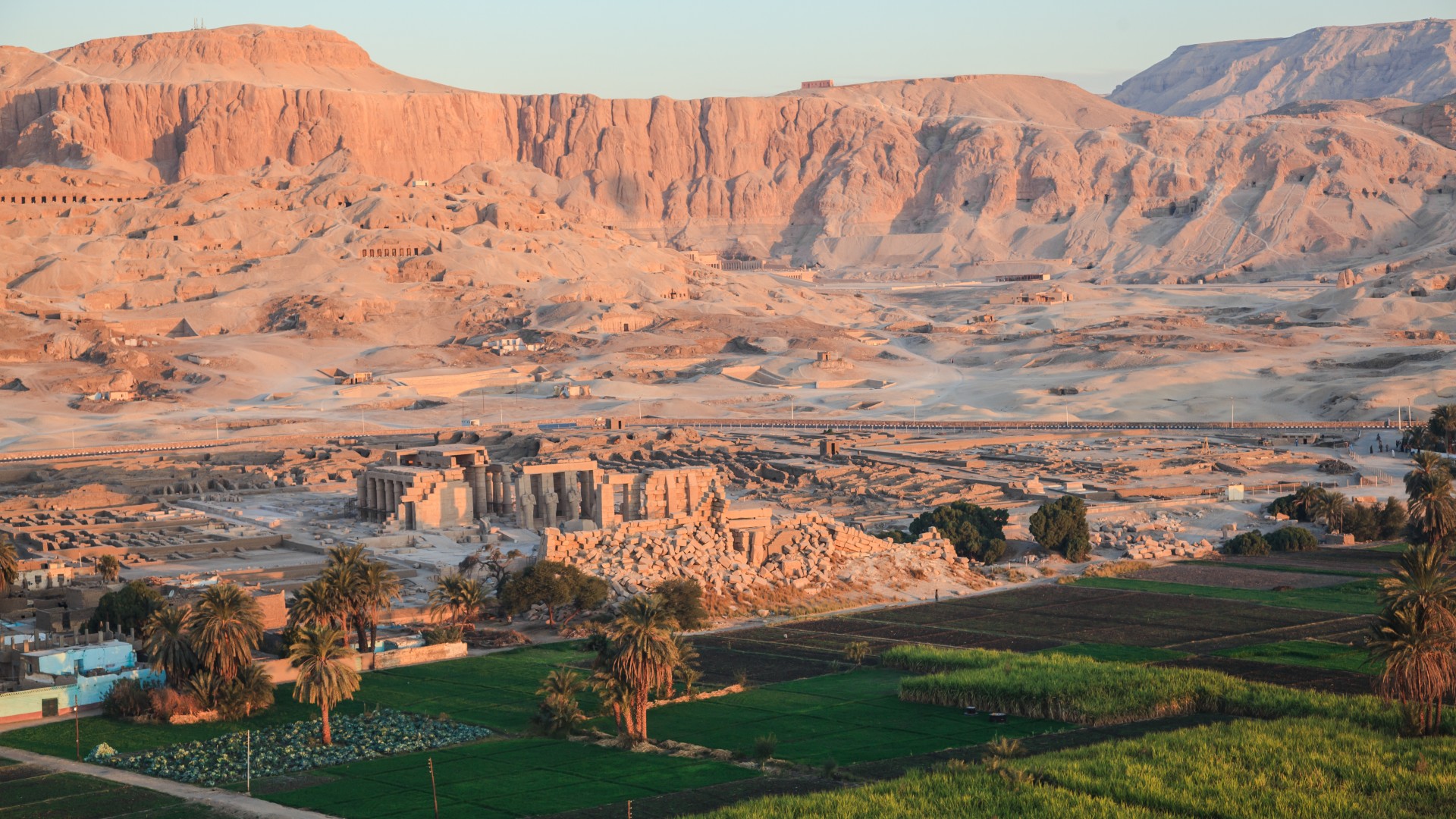How to Draw a Egyptian Pharaoh Easy
Why did ancient Egyptian pharaohs stop building pyramids?

For more than a millennia, Egyptian pharaohs had pyramids constructed and often were buried beneath or within the massive monuments.
Egyptian pharaohs constructed pyramids between the time of King Djoser (reign 2630 to 2611 B.C.), who built a step pyramid at Saqqara, to the time of King Ahmose I (reign 1550 to 1525 B.C.), who built the last known royal pyramid in Egypt at Abydos.
These iconic pyramids displayed the pharaohs' power, wealth and promoted their religious beliefs. So why did the ancient Egyptians stop building pyramids shortly after the New Kingdom began?
Related: How were the Egyptian pyramids built?
In ancient Egypt, pyramid construction appeared to wane after the reign of Ahmose, with pharaohs instead being buried in the Valley of the Kings near the ancient Egyptian capital of Thebes, which is now modern-day Luxor. The Theban Mapping Project notes (opens in new tab) on their website that the earliest confirmed royal tomb in the valley was built by Thutmose I (reign 1504 to 1492 B.C.). His predecessor Amenhotep I (reign 1525 to 1504 B.C.) may also have had his tomb built in the Valley of the Kings, although this is a matter of debate among Egyptologists.
Why stop?
It's not entirely clear why pharaohs stopped building royal pyramids, but security concerns could have been a factor.
"There are plenty of theories, but since pyramids were inevitably plundered, hiding the royal burials away in a distant valley, carved into the rock and presumably with plenty of necropolis guards, surely played a role," Peter Der Manuelian, an Egyptology professor at Harvard University, told Live Science in an email.
"Even before they gave up on pyramids for kings, they had stopped placing the burial chamber under the pyramid. The last king's pyramid — that of Ahmose I, at Abydos — had its burial chamber over 0.5 km [1,640 feet] away, behind it, deeper in the desert," Aidan Dodson, an Egyptology professor at the University of Bristol, told Live Science in an email.
One historical record that may hold important clues was written by a man named "Ineni," who was in charge of building the tomb of Thutmose I in the Valley of the Kings. Ineni wrote that "I supervised the excavation of the cliff tomb of his majesty alone — no one seeing, no one hearing." This record "obviously suggests that secrecy was a major consideration," Ann Macy Roth, a clinical professor of art history and Hebrew and Judaic studies at New York University, told Live Science in an email.
The natural topography of the Valley of the Kings could explain why it emerged as a favored location for royal tombs. It has a peak now known as el-Qurn (sometimes spelled Gurn), which looks a bit like a pyramid. The peak "closely resembles a pyramid, [so] in a way all royal tombs built in the valley were placed beneath a pyramid," Miroslav Bárta, an Egyptologist who is vice rector of Charles University in the Czech Republic, told Live Science in an email.

For Egyptian pharaohs the pyramid was important as it was a place "of ascension and transformation" to the afterlife, wrote Mark Lehner, director and president of Ancient Egypt Research Associates, in his book "The Complete Pyramids: Solving the Ancient Mysteries (opens in new tab)" (Thames and Hudson, 1997).
The topography of Luxor, which became the capital of Egypt during the New Kingdom (1550 to 1070 B.C.) may also have played a role in the decline of pyramid construction. The area is "far too restricted in space, with also lots of lumps and bumps," Dodson said. In other words, the ancient capital may have been too small and architecturally challenging to serve as the home for new pyramids.
Religious changes that emphasized building tombs underground are another possible reason the Egyptians ditched grand pyramids. "During the New Kingdom, a concept of the night journey of the king through the Netherworld became extremely popular, and this required sophisticated plans of the tombs hewn in bedrock below ground," Bárta said. The underground tombs hewn into the Valley of the Kings fit this concept well.
While pharaohs stopped building pyramids, wealthy private individuals continued the practice. For example a 3,300 year-old tomb at Abydos, which was built for a scribe named Horemheb, had a 23-foot-high (7 meters) pyramid at its entrance, archaeologists announced in 2014.
During the first millennium B.C., pyramid building also became popular in Nubia, an area that includes what is now Sudan and parts of southern Egypt. The Nubians built pyramids for both royalty and private individuals. How many they built is not clear, Lehner noted in his book that there are about 180 royal pyramids while recent archaeological research reveals that there were many more pyramids constructed for private individuals. The rulers of Nubia continued building pyramids until around 1,700 years ago.
Originally published on Live Science.
Source: https://www.livescience.com/why-ancient-egyptians-stopped-building-pyramids
0 Response to "How to Draw a Egyptian Pharaoh Easy"
Postar um comentário